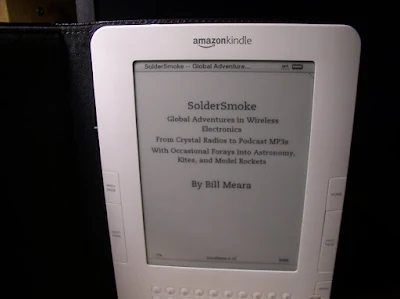 From the AMSAT site:
From the AMSAT site:AMSAT-OSCAR 7 was launched November 15, 1974 by a Delta 2310 launcher from Vandenberg Air Force Base, Lompoc, California. AO-7 was launched piggyback with ITOS-G (NOAA 4) and the Spanish INTASAT. Built by a multi-national (German, Canadian, United States, and Australian) team of radio amateurs under the direction of AMSAT-NA. It carried Mode A (145.850-950 MHz uplink and 29.400-500 MHz downlink) and Mode B (432.180-120 MHz uplink and 145.920-980 MHz downlink (inverted)) linear transponders and 29.500 and 145.700 MHz beacons. The 2304.1 MHz was never turned on because of international treaty constraints.
In mid 1981 AO-7 ceased operation due to battery failures. It was thought at that time that the batteries had shorted. However on June 21, 2002, at least one of the shorted batteries went open-circuit, allowing the satellite to waken whenever it is in sunlight, and randomly begin operation in one of 4 modes.
According to the log at planetemily.com/ao7/ao7log.php, this old warrior is still supporting transponder action in mode A and mode B as recently as 9/10/09, and on a regular basis, whenever it is in sunlight.
When the satellite is in sunlight for extended periods of time, the 24-hour timer still switches the bird between modes A and B. Listen for the corresponding beacon to determine which mode the satellite is currently operating in, or refer to the above mentioned web page to see what mode has recently supported QSO\'s as the best estimate of what is the current mode of operation.
Please remember, there are no (functional) batteries, so the satellite\'s power input is limited to whatever output can be generated by the ancient solar panels. Use the least uplink power possible to minimize your downlink power usage, and maximize the number of simultaneous QSO\'s supported in the passband. There are other operating tips at:http://www.planetemily.com/ao7/usage.php
Linear transponder birds are a scarce commodity these days, so please use AO-7 responsibly, but please DO enjoy her!











